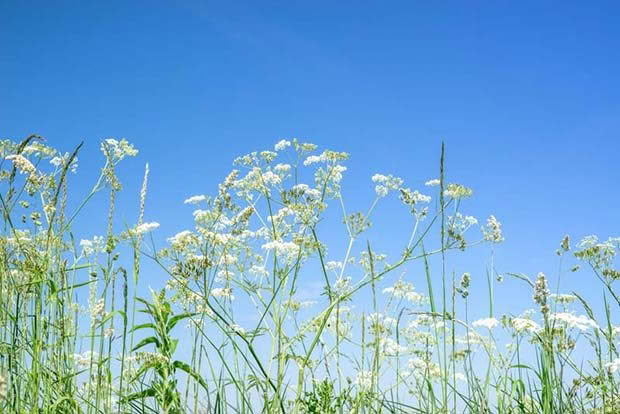Why a messy orchard can do wonders for your fruit

The last thing you need is for your orchard to look neat and tidy, at least not ground level anyway.
Words: Nadene Hall
The orchard floor is often a grass-only carpet, or often completely denuded of anything, leaving bare soil. But for the organic gardener, this is the place where useful plants can help you to create healthy trees and delicious fruit. A herbal ley will attract and provide habitat for beneficial insects that in turn will target pests like caterpillars and aphids.
The number one plant to have
Cow parsley (Anthriscus sylvestris) is the home orchard-keeper’s best friend. You probably know it as a weed but this useful herb offers a range of benefits including:
– a wide season of flowering providing food for beneficial insects
– perennial growth habit requiring little maintenance
– it outcompetes grass species that would otherwise reduce apple yields
– eliminates need for herbicide strips or mulching as it provides a habitat for beneficial insects
– its tap roots do not compete strongly with fruit tree roots
– it increases the rate of leaf litter decomposition (nutrient cycling and disease prevention benefits) and it traps blackspot fungal spores that are shot up in the spring from the fungus overwintering in leaf litter.
Alternatives or additions to cow parsley include wild carrot, wild parsnip, dill and coriander but they do not have them same protracted flowering period or persistence.
What else to plant
The wider the selection of plants – known affectionately in organic circles as the ‘floriferous, umbelliferous under-storey’ – the more opportunities there are to feed and house the beneficial insects that will help improve your soil and protect your trees from pests.
Members of the Apiaceae (formally Umbelliferae) or carrot family have small open flowers suitable for providing nectar and pollen to beneficial insects with short probosci including parasitoid wasps and hoverflies. These plants – including dill, fennel, lovage and coriander – have been used as understorey plants in apple orchards to provide biological control of codling moth and leafroller caterpillars through the boosted action of parasitoid wasps (leaf roller control is more effective than codling moth control as the codling moth caterpillar is protected for much of the time within the apple).
The Biodynamic Association recommends the following plant options to attract predator insects and spiders: tansy, buckwheat, cleome, mustard, chicory, oxeye daisy, thistles, chamomile, dandelions, sow thistle, calendula, sunflowers, wild carrot and wild parsnip, fennel, white clover, dill and wildflowers.
They also recommend Tasmanian blackwood trees (Acacia melanoxylon) and persimmon for their excellent ladybird-hosting abilities.
Love this story? Subscribe now!
 This article first appeared in NZ Lifestyle Block Magazine.
This article first appeared in NZ Lifestyle Block Magazine.
